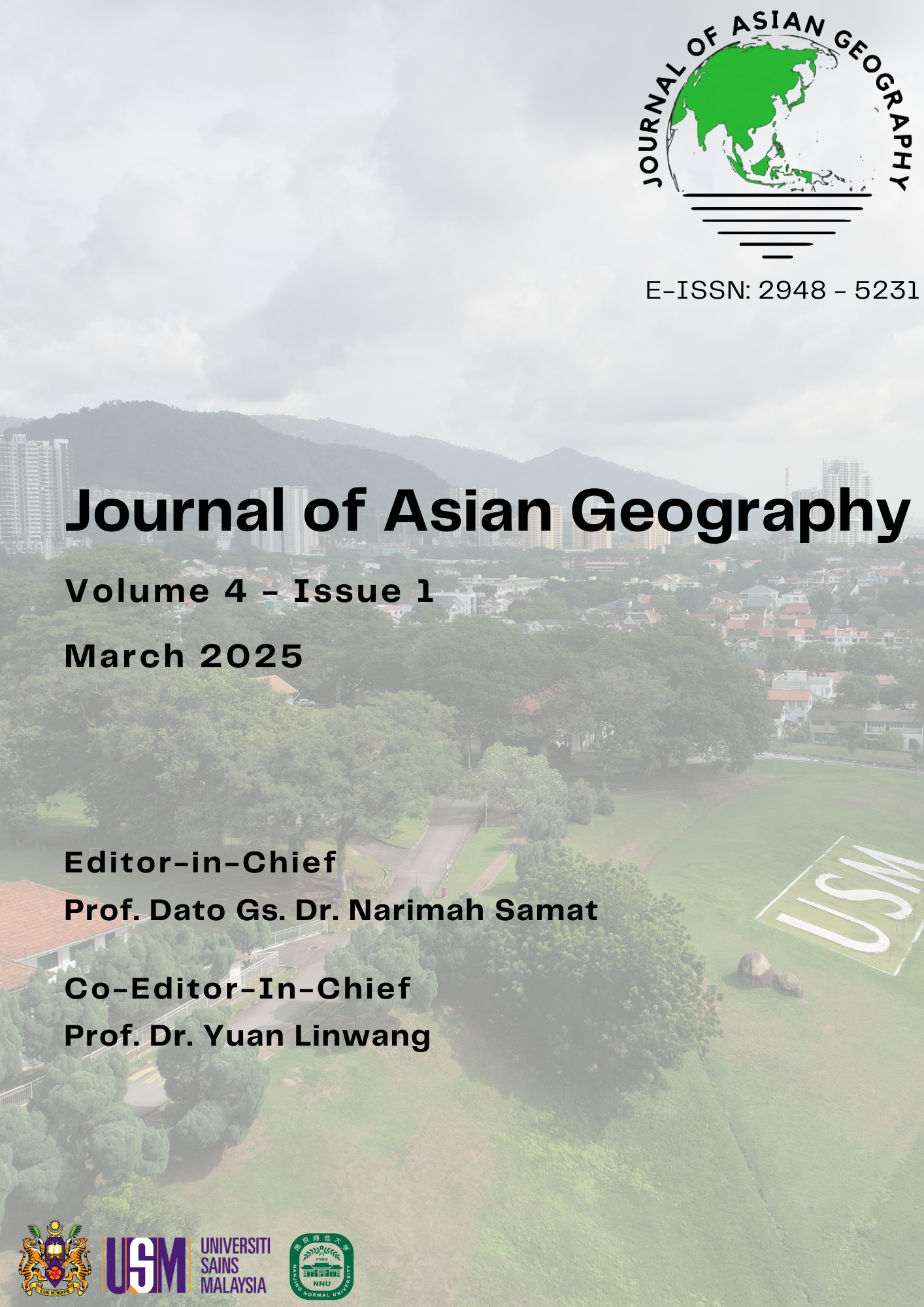Analysis of Precipitation Patterns in the East Coast States of Peninsular Malaysia from 1981 to 2019
DOI:
https://doi.org/10.36777/jag2025.4.1.9Keywords:
Precipitation, Consecutive Dry Days, Consecutive Wets Day, Geography Information SystemAbstract
This study examines the precipitation distribution across the east coast states of Peninsular Malaysia, specifically focussing on Kelantan, Terengganu, and Pahang over the period from 1981 to 2019. This analysis seeks to comprehend the alterations in rainfall patterns resulting from climate change and weather phenomena, including El Niño and La Niña. Precipitation data are sourced from the Aphrodite dataset, with statistical analysis incorporating indices such as Consecutive Dry Days (CDD) and Consecutive Wet Days (CWD). The research indicates a notable rise in the total annual rainfall in northern regions, including Kelantan and Terengganu, particularly during the La Niña phenomenon. Conversely, southern regions like Pahang exhibit greater susceptibility to the impacts of the El Niño phenomenon, resulting in drought conditions and diminished rainfall. The visual analysis results, featuring graphs and Geography Information System (GIS) maps, illustrate the temporal and spatial variations in rainfall distribution, highlighting a trend of increasing maximum dry days in Pahang and a decrease in dry days in Kelantan. This study offers significant insights into the risks associated with floods and droughts, as well as their effects on water resources, agriculture, and the livelihoods of local communities. The findings presented here serve as a valuable reference for the development of water resource management and disaster mitigation strategies to address the challenges posed by climate change.

Downloads
Published
Issue
Section
License
Copyright (c) 2025 Journal of Asian Geography

This work is licensed under a Creative Commons Attribution 4.0 International License.

